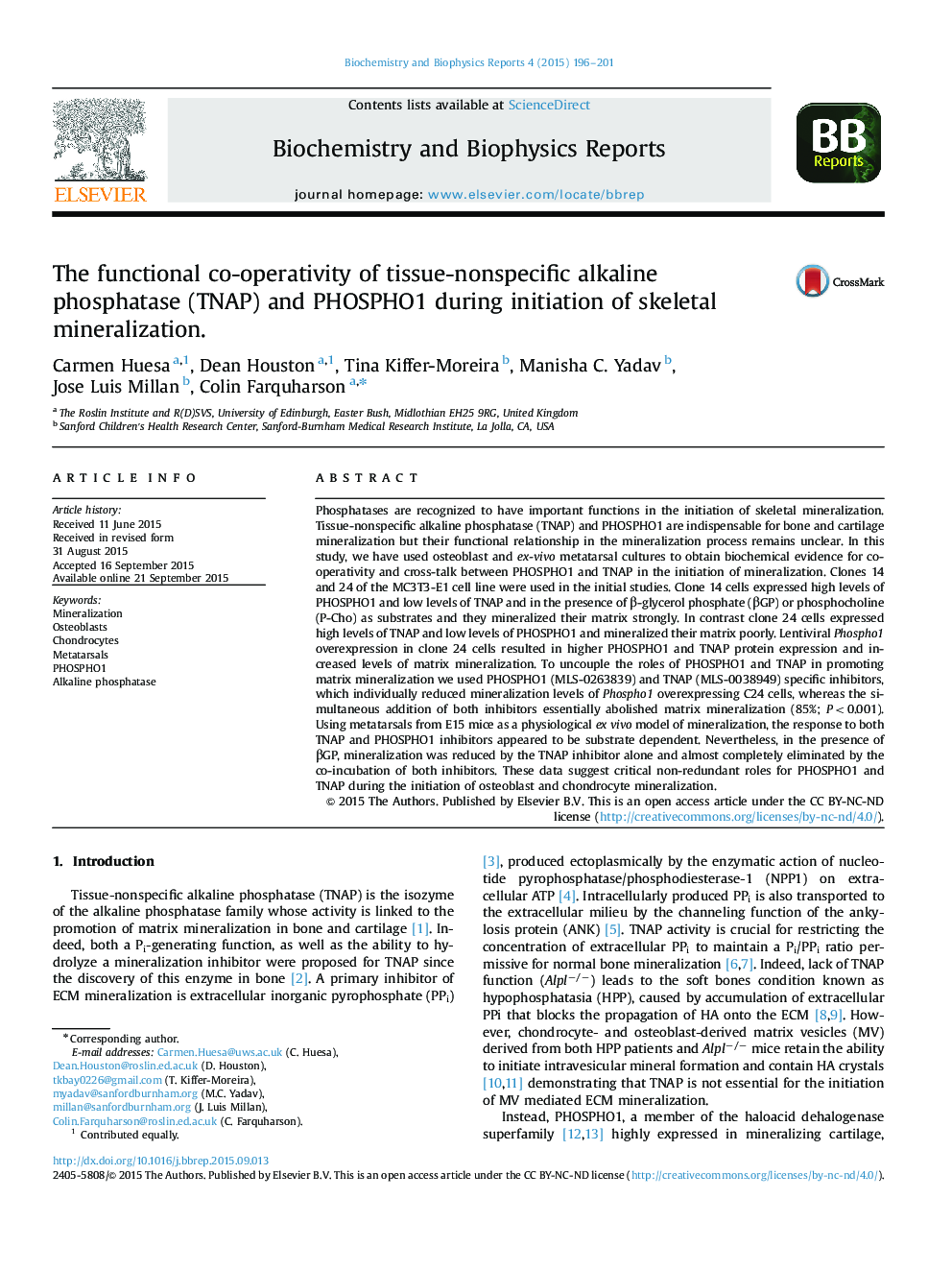| Article ID | Journal | Published Year | Pages | File Type |
|---|---|---|---|---|
| 1941816 | Biochemistry and Biophysics Reports | 2015 | 6 Pages |
•PHOSPHO1 activity is required for osteoblast and chondrocyte mineralization.•PHOSPHO1 and TNAP have non-redundant roles in the initiation of mineralization.•Both PHOSPHO1 and TNAP activity are required for complete matrix mineralization.•Phosphocholine is a suitable substrate for mineralization studies.•Embryonic metatarsals are a valuable model to study matrix mineralization.
Phosphatases are recognized to have important functions in the initiation of skeletal mineralization. Tissue-nonspecific alkaline phosphatase (TNAP) and PHOSPHO1 are indispensable for bone and cartilage mineralization but their functional relationship in the mineralization process remains unclear. In this study, we have used osteoblast and ex-vivo metatarsal cultures to obtain biochemical evidence for co-operativity and cross-talk between PHOSPHO1 and TNAP in the initiation of mineralization. Clones 14 and 24 of the MC3T3-E1 cell line were used in the initial studies. Clone 14 cells expressed high levels of PHOSPHO1 and low levels of TNAP and in the presence of β-glycerol phosphate (βGP) or phosphocholine (P-Cho) as substrates and they mineralized their matrix strongly. In contrast clone 24 cells expressed high levels of TNAP and low levels of PHOSPHO1 and mineralized their matrix poorly. Lentiviral Phospho1 overexpression in clone 24 cells resulted in higher PHOSPHO1 and TNAP protein expression and increased levels of matrix mineralization. To uncouple the roles of PHOSPHO1 and TNAP in promoting matrix mineralization we used PHOSPHO1 (MLS-0263839) and TNAP (MLS-0038949) specific inhibitors, which individually reduced mineralization levels of Phospho1 overexpressing C24 cells, whereas the simultaneous addition of both inhibitors essentially abolished matrix mineralization (85%; P<0.001). Using metatarsals from E15 mice as a physiological ex vivo model of mineralization, the response to both TNAP and PHOSPHO1 inhibitors appeared to be substrate dependent. Nevertheless, in the presence of βGP, mineralization was reduced by the TNAP inhibitor alone and almost completely eliminated by the co-incubation of both inhibitors. These data suggest critical non-redundant roles for PHOSPHO1 and TNAP during the initiation of osteoblast and chondrocyte mineralization.
